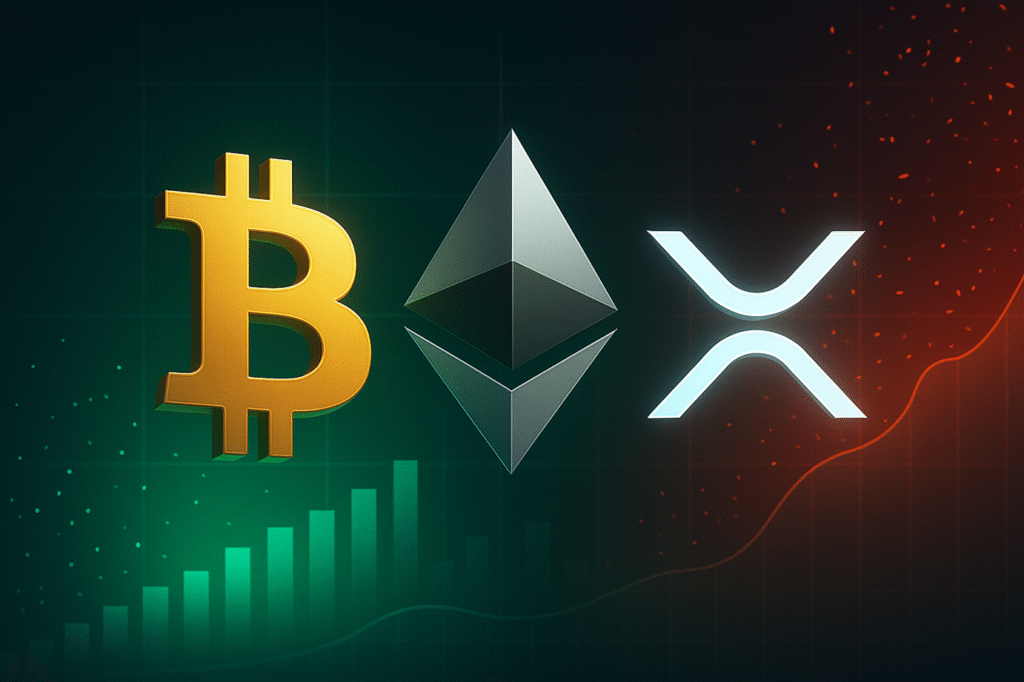In today’s rapidly evolving cryptocurrency market, keeping a pulse on the latest trends and analyses is crucial for investors aiming to maximize returns. With digital assets such as Bitcoin, Ethereum, and XRP leading the charge, understanding the financial health and strategies of these assets can offer invaluable insights. This guide delves deep into the profitability of retail investors in the cryptocurrency space, revealing how each asset compares and what it means for market dynamics.
Analyzing Cryptocurrency Retail Investor Profitability: XRP, Bitcoin, and Ethereum
Understanding Retail Investors’ Realized Price
Retail investors are those individuals holding smaller cryptocurrency balances, typically valued at less than $1,000. To gauge their profitability, the Realized Price indicator is crucial. This metric reflects the average acquisition cost of their holdings, offering insight into whether investors are experiencing gains or losses. If the current spot price of an asset is above the Realized Price, investors generally enjoy net unrealized gains.
Recent data from Glassnode highlights that XRP’s retail investors are currently seeing a 60% profit margin despite recent market downturns. This robust profit margin emphasizes XRP’s resilience and potential advantage over Ethereum’s 40% profitability. Meanwhile, Bitcoin persists as the frontrunner with its retail investors achieving over 100% profit margin, even in volatile conditions.
Market Activities: Selling and Accumulation Trends
Understanding what retail investors do with their gains can provide a glimpse into market sentiment and future trends. Analysis from Santiment indicates that retail investors across Bitcoin, Ethereum, and XRP networks have been active sellers recently. After a recent price decline, Bitcoin saw retail investors distributing 0.36% of their holdings, marking the highest rate of selling in two months. Ethereum investors, on the other hand, have been divesting steadily over the last month with a 0.90% decrease in their holdings. XRP’s retail players initially engaged in a sharp sell-off but have since shown mixed behavior, slightly accumulating some holdings back.
Santiment emphasizes that retail investors’ behavior often inversely correlates with market movements, suggesting that a panic sell-off might be indicative of an impending market recovery.
XRP Market Update
Amidst the broader market fluctuations, XRP’s price has also retracted, recently recorded at $2.13. Monitoring these price trends is essential for investors seeking to time their entries and exits strategically.
Frequently Asked Questions
Is Fantom (FTM) a good long-term investment?
Fantom’s architecture allows for scalability and low transaction fees, making it appealing among digital assets. Potential investors should carefully evaluate market trends, technological developments, and Fantom’s competitive landscape before committing to long-term investments.
What factors contribute to the profitability of retail investors in cryptocurrencies?
The profitability of retail investors is influenced by factors such as market timing, the specific cryptocurrency’s performance against the Realized Price, and overall market sentiment. Engaging with reliable financial insights platforms like Finances Zippy can help investors stay informed and make timely decisions.
How can retail investors mitigate risks in volatile crypto markets?
Retail investors can mitigate risks by diversifying their portfolios, setting stop-loss orders, and staying informed about market trends and technological advancements within the crypto space.
What is the Realized Price, and why is it important?
The Realized Price is an essential metric that indicates the average acquisition cost of a particular cryptocurrency asset. It helps investors understand whether their investment is in a state of profit or loss relative to the current market price.
This guide offers a comprehensive understanding of XRP, Bitcoin, and Ethereum’s retail investor profitability, supporting readers in making well-informed financial decisions. By analyzing current data and trends, investors can effectively navigate the dynamic landscape of cryptocurrency investments.

